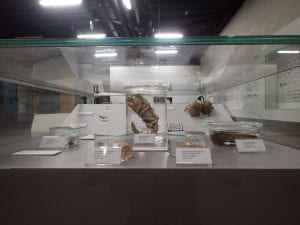
Group-work has not always been something I looked forward to as a student and I took those past negative experiences into account when I planned for group projects for the course I teach. The scenario we were given to discuss for Topic 3 of ONL202 about learning in communities—networked collaborative learning contrasted “group-work mode from school” vs collaborative learning that encourages learners to “collaborate with their peers…makes use of all the different competencies”.
During the webinar for this topic by Kay Oddone, we looked into how learning could be developed within a community, e.g., a course or our individual ONL202 discussion groups, and within a network, e.g., the ONL202 cohort or connections on Twitter. It does seem like depending on the context, the goals and approaches to encourage collaborative learning would differ accordingly. Professionally, it is appealing to build a personal learning network (Warlick, 2009) to continuously learn throughout our respective career journeys. I began to using Twitter professionally mainly to expand on my research network, but it would definitely be useful grow my pedagogical network too.
Within our discussion group, we went in-depth on the topic of encouraging better collaboration. As usual we explored a variety of topics and what was most impactful was our shared reflections of our journey with ONL202, e.g., how frustrated we had been in the early orientation weeks, when we repeatedly had to introduce ourselves through the early meetings and by using Padlet—two months into the course, we could appreciate that those steps were necessary to:
- orientate us with using digital tools
- build familiarity and trust in the group
We could also see the importance of our facilitators, who were vital in getting us started but quite quickly let us take the lead the discussions. They only stepped in when necessary to provide guidance or pointers when we got stuck. I reflected that students are usually left on their own to discuss and navigate the thorny path of group work, with instructors only seeing the end result of a report or presentation. It does seem like an intriguing alternative to sit in on group discussions to provide necessary scaffolding and intervention along the way to enhance the collaborative learning process. This may also be helpful to avoid the usual ‘group-work mode’, where each person is assigned to cover different aspects of the task, instead of discussing and working out the problem together.
Because of my past experiences as a student and instructor, I was interested explore the aspect of making collaborative learning inclusive. Without addressing the communication/collaborative ability gap within a class/group, everyone would be struggling to learn together or complete the task.
As usual we found too many readings to go through in two weeks. From selected sources, I gathered a non-comprehensive list of strategies for effective and inclusive online collaborative learning:
- Use appropriate technology
- Set appropriate topics/tasks to build group interdependence
- Have clear goals, strong articulation between discussion topics and assessments
- Combine synchronous and asynchronous activities
- Keep groups small and diverse
- Give students autonomy, e.g., to select topic or decide on process
- Establish peer evaluation
- Regular, ongoing instructor presence
- Orientation: explain guidelines on behaviour, goals, technology, expectations of learners
(adapted from: Dirkx & Smith, 2004; RIT, 2014; Scager et al., 2016; Bates, 2019)
Collaborative learning is a powerful pedagogical method, with far-reaching consequences beyond the classrooms, and it is taken to another level online. I look forward to applying the knowledge and experiences gained from ONL202 into my teaching practices.
References
Bates, A.W. (2019) 4.4 Online collaborative learning. In: Teaching in a Digital Age. Available here.
Dirkx, J.M. & Smith, R.O. (2004) Thinking Out of a Bowl of Spaghetti: Learning to Learn in Online Collaborative Groups. In Roberts, T. S. (Ed.), Online Collaborative Learning: Theory and Practice (pp. 132-159). IGI Global. DOI: 10.4018/978-1-59140-174-2.ch006
Pang, L. & Jen, C.C. (2018) Inclusive dyslexia-friendly collaborative online learning environment: Malaysia case study. Education and Information Technologies, 23: 1023–1042. DOI: 10.1007/s10639-017-9652-8
RIT (Rochester Institute of Technology) (2014) Online Design: Collaborative Online Learning. Available here.
Scager, K., Boonstra, J., Peeters, T., Vulperhorst, J. & Wiegant, F. (2017) Collaborative Learning in Higher Education: Evoking Positive Interdependence. CBE—Life Sciences Education, 15(4). DOI: 10.1187/cbe.16-07-0219
Warlick, D. (2009) Grow your personal learning network. Leading and Learning with Technology, March/April 2009: 12–16. Available here.
 By John Martinez Pavliga via Flickr
By John Martinez Pavliga via Flickr 

![Neon lights spelling out: Think about things differently [with differently flipped horizontally]](https://blog.nus.edu.sg/ngtinghui/files/2020/09/pexels-ivan-bertolazzi-2681319-225x300.jpg)